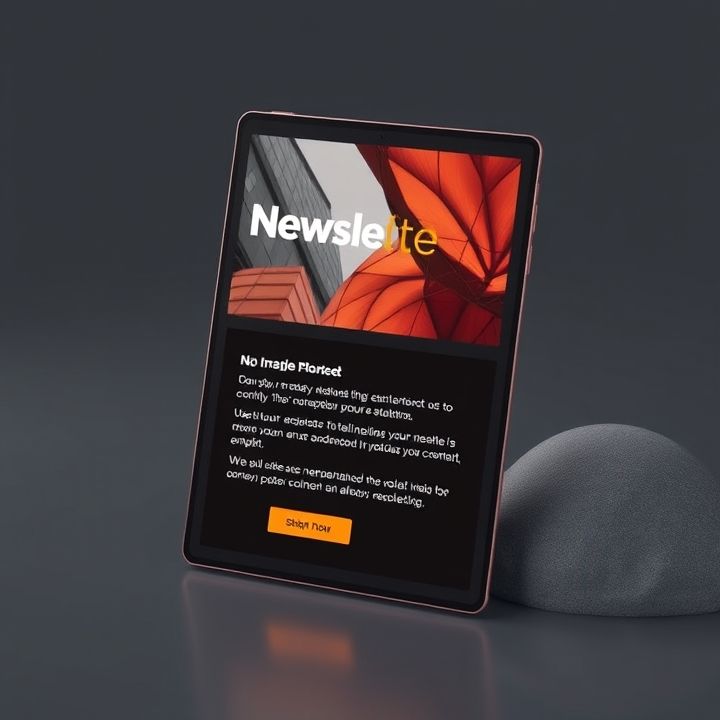Table of Contents
- Introduction
- Understanding the Sales Funnel Stages: Awareness, Consideration, and Decision
- Crafting Engaging Subject Lines to Capture Initial Interest
- Using Personalization to Build Connection and Relevance
- Implementing A/B Testing for Continuous Email Content Improvement
- Leveraging Storytelling to Create Emotional Engagement and Drive Action
- Conclusion
- Frequently Asked Questions
Introduction
In the competitive world of sales, an optimized sales funnel can be your most valuable asset. Imagine effortlessly transforming potential leads into loyal customers through the power of email marketing. Intrigued? You should be! In this article, we’re about to reveal the hidden gems of email marketing that can supercharge your sales funnel and skyrocket your conversion rates.
The cornerstone of this transformation lies in implementing tactics that not only engage your audience but also compel action. Let’s dive into how the right emails can turn prospects into conversions with the table below offering a teaser of what’s to come in this enriching journey:
| Tactic | Benefit |
|---|---|
| Personalized Email Campaigns | Increase Engagement |
| A/B Testing | Optimize Performance |
| Segmented Lists | Targeted Outreach |
Read on to discover proven strategies that have helped businesses like yours achieve remarkable results. Whether you’re a seasoned marketer or just getting started, these tactics are designed to enhance your email marketing effectiveness, leaving a lasting impact on your sales funnel.
Understanding the Sales Funnel Stages: Awareness, Consideration, and Decision
Understanding the different stages of the sales funnel—Awareness, Consideration, and Decision—is crucial for optimizing email content effectively. The Awareness stage is where potential customers first learn about your brand. The objective here is to attract and engage with informative and educational content. Emails should focus on providing value, introducing the problem, and subtly nudging them towards your solution.
During the Consideration stage, prospects have identified their problem and are evaluating different options. Here, emails should aim to position your brand as an authoritative source. Highlight your product’s unique benefits through case studies, testimonials, and detailed insights, allowing prospects to understand why your solution stands out.
The Decision stage is where the customer is ready to make a purchase. Emails at this stage should be direct and persuasive, often incorporating limited-time offers, personalized deals, or compelling calls-to-action to incentivize the decision-making process. Understanding these stages allows marketers to tailor email strategies that guide prospects smoothly from one stage to the next, thereby enhancing conversion rates.
Crafting Engaging Subject Lines to Capture Initial Interest
Crafting engaging subject lines is crucial to capturing initial interest and setting the stage for successful email marketing campaigns. An effective subject line piques curiosity, creates urgency, or promises value, encouraging recipients to open the email. To achieve this, personalization can play a significant role. By incorporating the recipient’s name or a specific detail relevant to them, you create a more tailored experience that resonates on a personal level.
Additionally, leveraging powerful, action-driven words can create an immediate connection, prompting recipients to take the desired action. Words such as “discover,” “unlock,” or “explore” can enhance the appeal of your subject line. However, it’s important to maintain a balance between creativity and clarity to ensure that the message is easily understood.
Using numbers and lists can also significantly increase open rates by setting clear expectations. For instance, subject lines like “5 Tips for Boosting Sales” give readers a concrete idea of what to expect. Lastly, testing is indispensable. Through A/B testing, you can compare different subject lines to determine which resonates most with your audience, enabling continuous improvement over time.
Using Personalization to Build Connection and Relevance
Personalization is a powerful tactic to establish a meaningful connection with your audience throughout different stages of the sales funnel. By tailoring email content to resonate with individual recipients, you increase engagement and relevance. At the top of the funnel, using first names in subject lines and greetings can immediately grab attention and make emails feel more intimate. As prospects move through the funnel, leveraging data such as past interactions, preferences, and behaviors allows for more targeted content that addresses specific interests and needs.
Advanced personalization techniques, like dynamic content that changes based on recipient data, can significantly enhance mid-funnel communication. This involves recommending products or services based on browsing history or previous purchases. At the bottom of the funnel, customization becomes even more critical, with personalized incentives, such as special discounts on items left in a shopping cart or exclusive offers based on purchase history, proving effective.
Overall, personalization helps create a seamless experience that converts awareness into loyalty, transforming prospects into long-term customers. This approach not only boosts engagement rates but also builds trust and credibility, fostering lasting relationships.
Implementing A/B Testing for Continuous Email Content Improvement
Implementing A/B testing is a crucial tactic for continuously improving email content, specifically tailored to different stages of the sales funnel. A/B testing, also known as split testing, involves sending two variations of an email to a small segment of your audience to determine which performs better. One of the key benefits of A/B testing is that it provides concrete data on what resonates with your audience. For instance, you can experiment with various elements such as subject lines, call-to-action buttons, or images to identify the most effective version.
For top-of-funnel leads, the focus might be on increasing open rates with catchy subject lines, while middle-of-funnel prospects could benefit from content that nurtures interest through informative text. Bottom-of-funnel prospects may respond to personalized offers or discounts, prompting conversion. Continuous testing allows marketers to make data-driven decisions, improving engagement at every funnel stage.
Furthermore, A/B testing encourages incremental improvements, ensuring that your email marketing strategy evolves with your audience’s preferences. Over time, these small changes can lead to significant enhancements in overall performance, maximizing the return on investment for your email campaigns.
Leveraging Storytelling to Create Emotional Engagement and Drive Action
Leveraging storytelling in email content is a powerful tactic for creating emotional engagement and driving action. Stories have an inherent ability to resonate with readers, capturing their attention and making complex ideas more relatable. By crafting a narrative that connects with the reader’s emotions, marketers can establish a sense of empathy and understanding. This emotional connection is crucial, particularly when guiding prospects through the different stages of the sales funnel.
In the awareness stage, storytelling can be used to evoke curiosity and present a problem or scenario that the reader can identify with. Moving into the consideration stage, the story can demonstrate how the product or service offers a solution, using testimonials or case studies as evidence. Finally, in the decision-making stage, the narrative should incite urgency by illustrating the positive outcome the reader will experience, encouraging them to take the desired action.
By weaving a cohesive, engaging story throughout each stage, marketers can not only capture the attention of their audience but also inspire trust and foster a deeper connection, ultimately driving conversions and building brand loyalty.
Conclusion
In conclusion, mastering the art of email marketing within the sales funnel is crucial for enhancing conversion rates. By understanding each stage—Awareness, Consideration, and Decision—you can tailor your email approaches to meet the specific needs of your audience at every touchpoint. Engaging subject lines capture initial interest, while personalized content fosters a deeper connection, ensuring relevance throughout the user journey. A/B testing further refines your strategies, allowing for data-driven improvements that resonate with recipients. Storytelling, on the other hand, adds an emotional layer that can inspire action and build brand loyalty.
By effectively implementing these proven email tactics, marketers can guide prospects seamlessly from curiosity to conversion, transforming them into loyal customers. Continually optimizing your email strategies based on feedback and performance metrics not only increases engagement and conversion rates but also fosters long-term relationships. These insights ensure your sales funnel remains robust and adaptable in a competitive landscape, ultimately leading to sustained business growth and success.

